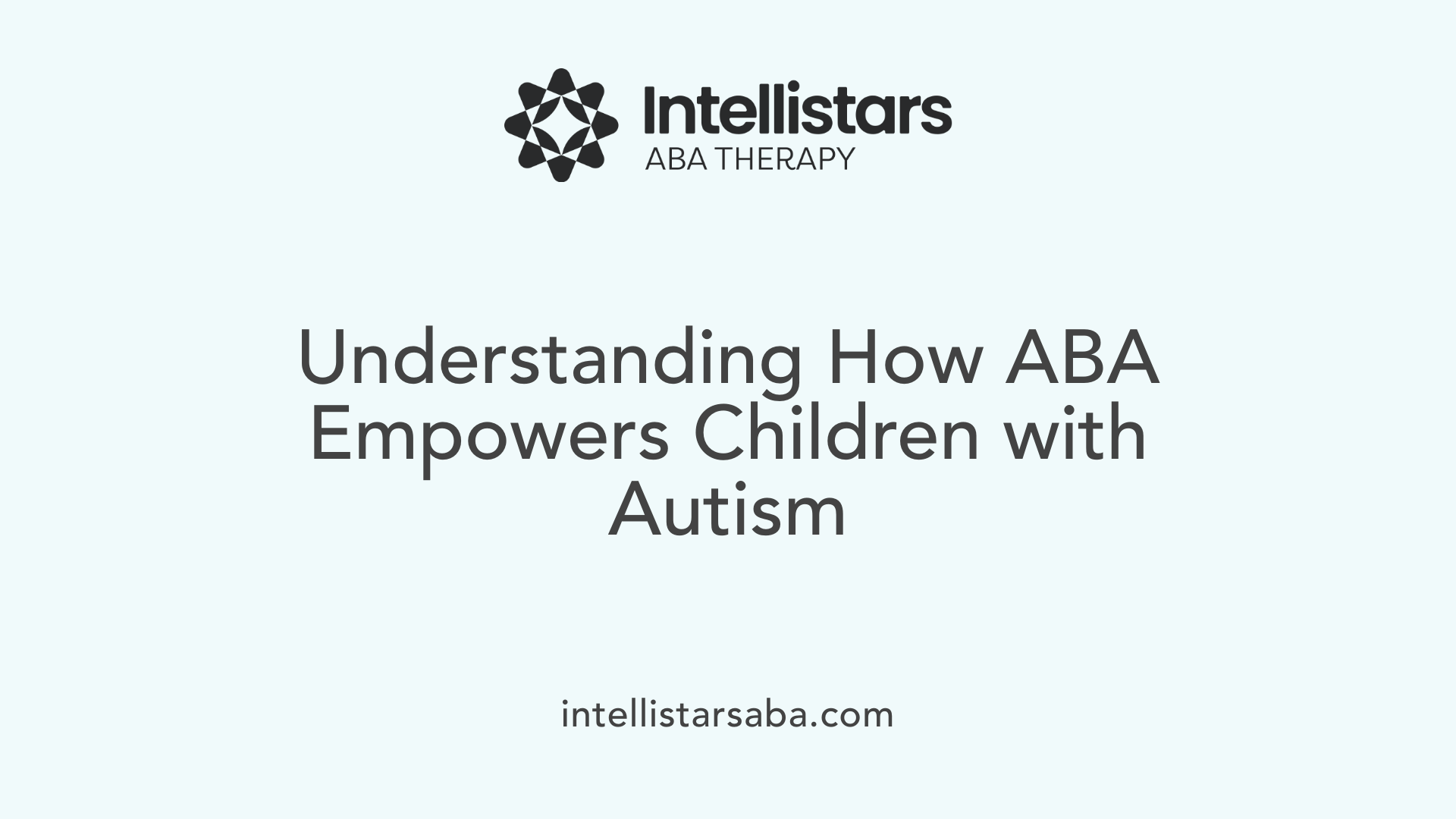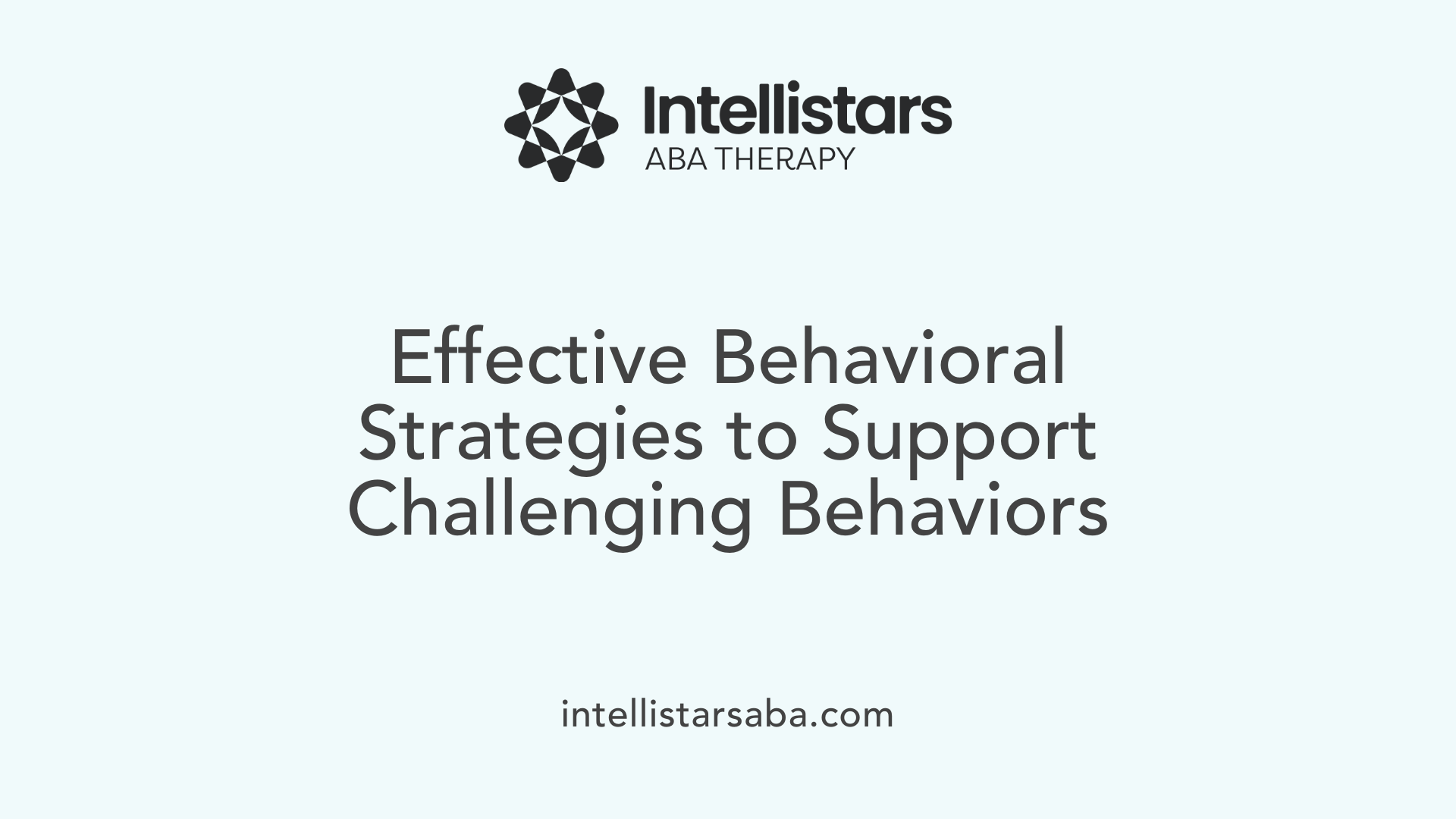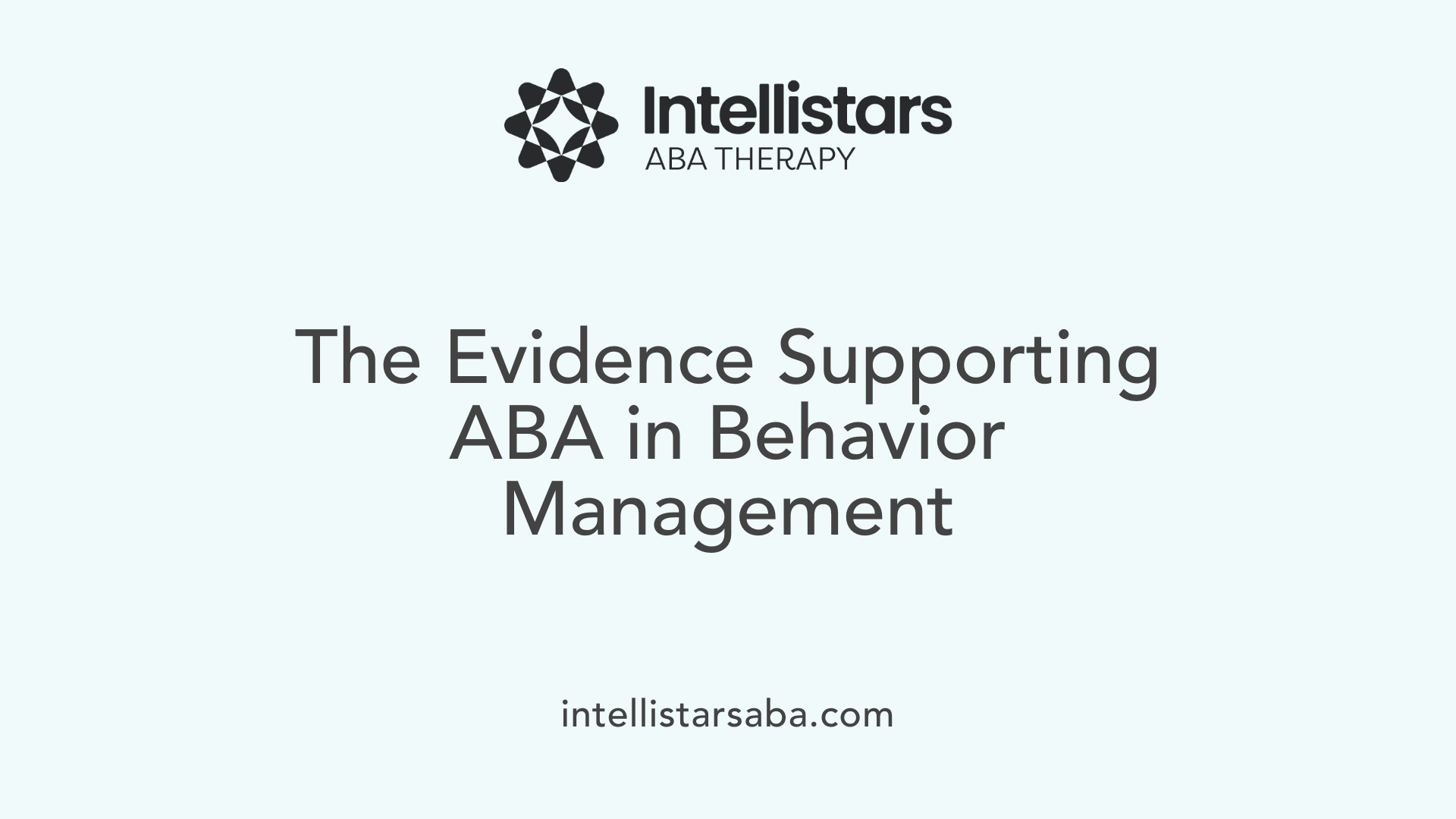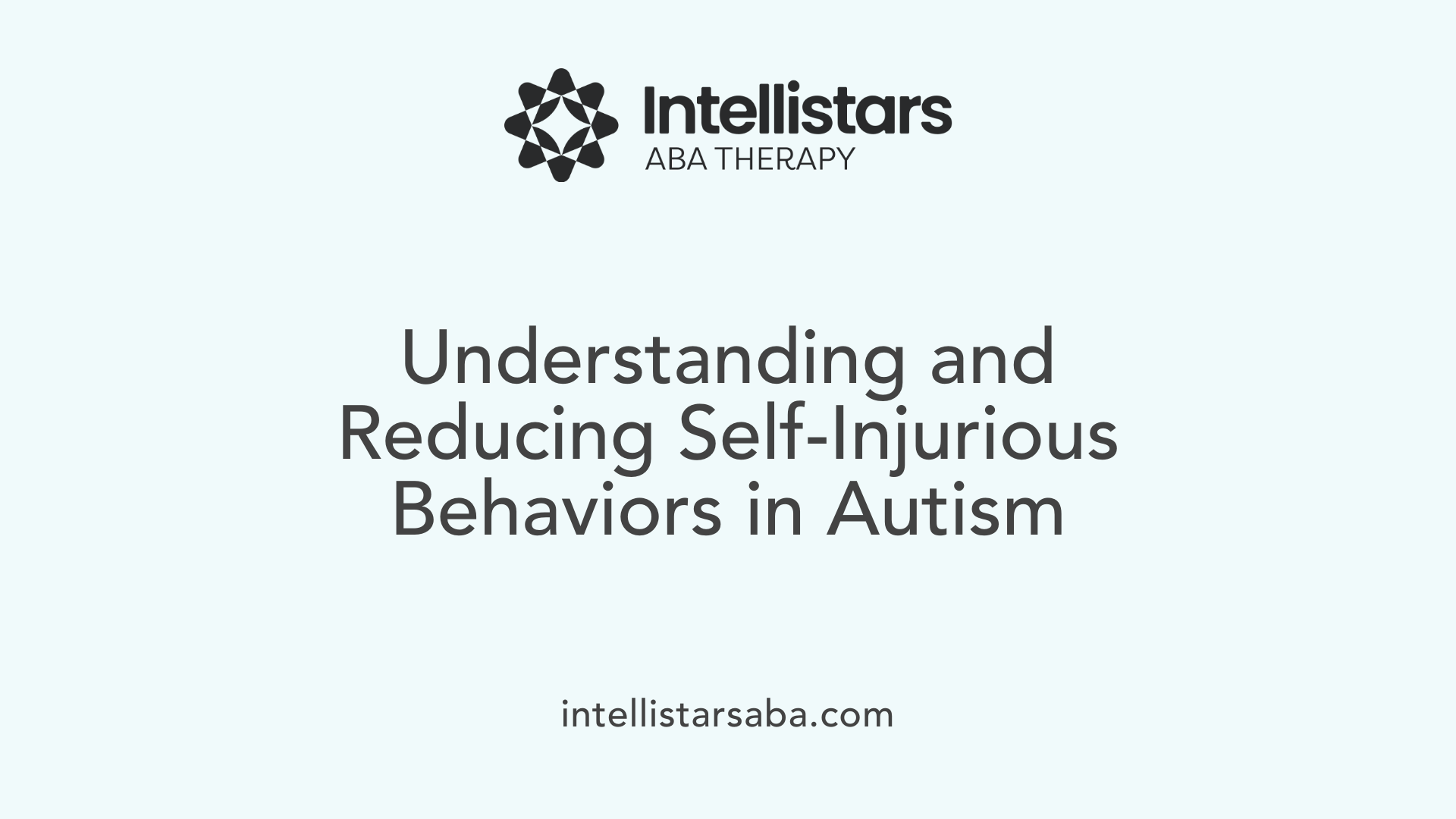Understanding the Role of ABA in Managing Challenging Behaviors
Applied Behavior Analysis (ABA) is a scientifically validated intervention widely used to reduce severe and distressing behaviors in individuals with autism spectrum disorder (ASD). Its structured approach offers hope for improved quality of life by addressing behaviors such as aggression and self-injury, which can pose significant challenges for individuals, families, and caregivers.
Fundamentals of ABA Therapy and Its Application in Autism

How does ABA therapy help children with autism?
ABA, or Applied Behavior Analysis, is an effective and research-backed approach used to support children with autism in developing essential skills. It focuses on teaching new behaviors, enhancing communication, and improving social and daily living skills.
The process begins with a detailed assessment of the child's behavior, which helps define specific targets for intervention. Behavior analysts conduct functional behavior assessments (FBA) to identify the reasons behind challenging behaviors by analyzing antecedents (what happens before) and consequences (what happens after). This helps in understanding what triggers behaviors like aggression or self-injury.
Interventions are then tailored to the child's individual needs. These strategies may include teaching alternative ways to communicate, such as using visual supports or verbal requests, role-playing social interactions, or reinforcing positive behaviors with rewards. Reinforcement encourages children to respond calmly and effectively, gradually decreasing aggressive or self-injurious responses.
Early implementation is vital. The earlier ABA therapy begins, the more effective it is in promoting skill development and behavioral improvements. Practitioners often break complex skills into small, manageable steps, practice them in natural settings, and work toward generalizing these skills across different environments, like home and school.
By focusing on each child's strengths and needs, ABA therapy fosters greater independence and participation in everyday activities. Its structured, evidence-based methodology supports sustained progress, ultimately helping children with autism navigate the world more effectively.
Behavioral Strategies to Reduce Challenging Behaviors

What behavioral interventions are used in ABA therapy to decrease challenging behaviors?
ABA therapy employs a range of behavioral strategies designed to reduce behaviors that cause harm or distress. Central to these strategies are techniques such as extinction, reinforcement procedures, and functional communication training (FCT).
Extinction involves withholding reinforcement that previously maintained a challenging behavior, thereby reducing its occurrence over time. For instance, if a child throws tantrums to gain attention, a therapist or caregiver might ignore the behavior, encouraging the child to find other, more appropriate ways to seek attention.
Reinforcement techniques are tailored to promote positive behaviors. Differential reinforcement, for example, involves reinforcing desirable behaviors while withholding reinforcement for problematic behaviors, encouraging the individual to adopt more adaptive responses.
Functional Communication Training (FCT) plays a vital role in helping individuals replace challenging behaviors with effective communication methods. If a child acts out because they cannot express their needs verbally, FCT teaches them alternative ways to communicate, such as using gestures or words, reducing frustration and aggression.
Another important component is antecedent modification, which involves changing the environment to prevent triggers of problematic behaviors. This could mean adjusting schedules, minimizing sensory overload, or providing visual supports to clarify expectations.
All these strategies are usually part of a personalized Behavior Intervention Plan (BIP), which aims to address specific behaviors and promote skills that improve daily functioning.
| Strategy | Description | Example | Effectiveness |
|---|---|---|---|
| Extinction | Removing reinforcement for a problematic behavior | Ignoring a child's tantrum for attention | Reduces frequency of behavior |
| Differential Reinforcement | Reinforcing desirable behaviors while ignoring or withholding reinforcement for undesirable behaviors | Reinforcing requests made verbally instead of yelling | Encourages replacement behaviors |
| Functional Communication Training (FCT) | Teaching alternative communication to replace problem behaviors | Teaching a child to use words or gestures instead of hitting | Decreases frustration and aggression |
| Antecedent Modifications | Changing environmental factors to prevent triggers | Using visual schedules to prepare a child for routines | Prevents escalation of behaviors |
These strategies aim to blend understanding of the individual’s needs with practical interventions, creating a supportive framework for reducing distressing and harmful behaviors.
Addressing Aggressive Behaviors in Children with Autism

What strategies can be used to reduce aggressive behaviors in children with autism?
Managing aggressive behaviors in children with autism involves a comprehensive approach that focuses on understanding and addressing their unique needs. An essential step is establishing clear rules and expectations within a consistent routine. This helps the child understand boundaries and reduces confusion that can trigger frustration.
Teaching emotional expression is also crucial. Many children with autism may have limited verbal skills, making it difficult for them to communicate their needs or feelings. Implementing functional communication training (FCT) can equip children with alternative ways to express emotions constructively, thereby decreasing the likelihood of aggression caused by frustration or inability to communicate.
Identifying triggers and stressors is a vital component of behavior management. Conducting behavioral assessments, such as Functional Behavior Assessments (FBA), allows caregivers and therapists to pinpoint the specific antecedents that lead to aggressive responses. Once identified, strategies like modifying schedules, reducing sensory overload, or avoiding certain stressors can prevent escalation.
Developing response plans tailored to each child's needs enhances safety and consistency. These plans may include calming techniques, designated safe spaces, and responses that are predictable and calm. Employing therapeutic strategies such as cognitive-behavioral therapy, along with positive reinforcement, can promote adaptive behavior over time.
Involving healthcare professionals is often beneficial. In cases of persistent aggression, medication may be considered under proper supervision to manage underlying sensitivities or comorbid conditions.
Most importantly, promoting a supportive environment filled with understanding and patience aids in addressing underlying causes of aggression. Trauma-informed practices, which recognize the potential for trauma and avoid punitive measures like restraints or seclusion, are increasingly recommended. They focus on understanding behaviors within a context, leading to more humane and effective interventions.
In summary, reducing aggression in children with autism requires a multifaceted approach—combining clear rules, emotional skill-building, trigger management, personalized response plans, and, when appropriate, medical and therapeutic support. Collaborating with caregivers, educators, and health professionals ensures strategies are consistent and tailored, paving the way for healthier behavioral responses.
Effectiveness of ABA in Managing Aggression and Self-Injury

How effective is ABA therapy in managing aggressive and self-injurious behaviors?
Applied Behavior Analysis (ABA) is considered a highly effective approach for managing behaviors like aggression and self-injury (SIB) in individuals with autism spectrum disorder. Its strength lies in the ability to create individualized treatment plans based on detailed behavioral assessments.
Behavioral assessments, including functional behavior assessments (FBAs), help identify the specific triggers and functions behind problematic behaviors. By understanding these factors, therapists develop personalized strategies to reduce harmful actions. For example, if a child's aggression stems from communication difficulties, ABA might focus on teaching alternative ways to express needs.
Interventions often involve positive reinforcement to encourage desirable responses and the use of communication training, particularly Functional Communication Training (FCT). FCT equips children with effective ways to express their needs, decreasing frustration levels that might otherwise lead to aggression or self-injury.
In many cases, ABA therapy is combined with medications like risperidone or aripiprazole, which have shown significant benefits in reducing severe behaviors. This multimodal approach can enhance the overall effectiveness, especially in cases where behavioral interventions alone are insufficient.
Throughout treatment, caregivers and therapists work together to monitor progress and adjust strategies as needed. This consistent, data-driven process promotes better emotional regulation, reduces challenging behaviors, and creates safer environments for the individual.
Overall, clinical research supports ABA's role as a cornerstone in behavior management for individuals with ASD, emphasizing the importance of tailored, evidence-based interventions to achieve meaningful and lasting improvements.
Addressing Self-Injurious Behavior (SIB) in Autism

What types of self-injurious behaviors (SIB) are common in individuals with autism?
Self-injurious behaviors in children with autism can include head banging, self-biting, self-scratching, skin picking, hair pulling, and other actions that often cause physical injury. These behaviors can be episodic or repetitive and pose serious health risks, such as tissue damage, fractures, infections, and in extreme cases, death. SIB tends to appear during childhood and can continue into adulthood. Studies show that about 50% of individuals with autism experience SIB at some point, with a current prevalence of around 25%. These behaviors are particularly prominent among those with more severe autism symptoms, intellectual disabilities, limited verbal skills, and motor or sleep issues.
What is the prevalence of SIB and what are the associated risk factors?
SIB affects a significant portion of the autistic population, notably higher than in people with other neurodevelopmental conditions or neurotypical peers. The severity of core autism symptoms, intellectual disability, lack of verbal communication, social skills deficits, motor impairments, and sleep disturbances are linked to increased likelihood and severity of self-injurious actions.
How does functional assessment of SIB guide intervention?
A comprehensive behavioral assessment, often a functional behavior assessment (FBA), is crucial. This process involves analyzing antecedents—events that occur before the behavior—and consequences that follow, to identify the reasons behind SIB. This understanding helps in designing personalized intervention strategies. Behavioral assessments may employ direct observation and indirect reports to explore triggers such as environmental changes, sensory overload, or attempts to communicate pain or frustration.
What behavioral treatments and interventions are used for SIB?
Effective interventions focus on addressing the functions of SIB. These include:
| Strategy | Description | Example Role |
|---|---|---|
| Antecedent manipulations | Alter triggers or environmental factors | Modifying routines to reduce stress |
| Reinforcement-based strategies | Reward alternative behaviors | Reinforcing use of communication devices instead of SIB |
| Functional Communication Training (FCT) | Teach constructive ways to express needs | Teaching verbal requests to replace self-biting |
| Extinction procedures | Discontinue reinforcement maintaining SIB | Ignoring SIB when it is socially reinforced |
| Punishment methods | Use of restraint or time-out (with ethical considerations) | Applied in some cases but controversial |
It must be noted that the use of restraint, seclusion, and punishment has come under ethical scrutiny. Mental health professionals and advocacy groups emphasize trauma-informed approaches, promoting understanding and supporting underlying causes such as communication challenges, sensory needs, or pain.
Some advocates caution against solely relying on behavior suppression techniques, advocating instead for strategies that respect the individual's dignity and address trauma risks. Therapists may combine behavioral treatments with supportive interventions that enhance communication, reduce frustration, and improve well-being.
How does ABA therapy contribute to reducing SIB?
ABA therapy is rooted in detailed functional analysis and individualized intervention plans. By identifying specific triggers—like sensory overload or communication difficulties—therapists develop targeted strategies such as skill-building for coping and communication. Positive reinforcement encourages alternative, socially appropriate behaviors, decreasing SIB over time.
While ABA has demonstrated success, critics highlight ethical concerns, especially regarding long-term use of certain techniques. Advocacy groups and researchers promote trauma-informed care, emphasizing understanding the reasons behind surface behaviors and avoiding trauma-inducing methods. Combining ABA with compassionate, ethical practices offers a more holistic approach to reducing SIB while respecting the rights and dignity of autistic individuals.
Ethical and Trauma-Informed Considerations in ABA Therapy
What ethical considerations are involved in ABA therapy for challenging behaviors?
The debate over ABA therapy often centers around ethical concerns, especially regarding the methods used to manage challenging behaviors like aggression and self-injury. The Therapist Neurodiversity Collective strongly opposes the use of restraint and seclusion in ABA treatments, considering these methods inhumane and capable of causing trauma.
Ethical practices in ABA advocate for trauma-informed care that respects the individual’s dignity and addresses their needs safely. This includes understanding that behaviors such as self-injury or aggression may stem from underlying issues like communication barriers, pain, sensory overload, or environmental stressors.
Critics of traditional ABA argue that reliance on reward and punishment alone can sometimes overlook these internal experiences and potentially lead to harm. As a result, there is a growing emphasis on approaches that prioritize the person's well-being without coercion.
Long-term use of certain behavior management techniques has also been scrutinized for potential trauma and even abuse. Ethical treatment now involves alternative strategies that focus on understanding and addressing the root causes of behaviors, rather than merely suppressing outward symptoms.
Incorporating trauma-sensitive methods involves creating supportive environments where autistic individuals feel safe and respected. This shift aims to promote positive behavioral change through understanding, rather than through punitive or restrictive measures. As autism advocacy expands, there is a clear movement toward interventions that uphold the rights and dignity of autistic people while effectively supporting their development.
Moving Forward with Compassionate Support
Integrating evidence-based ABA methods with ethical, trauma-informed care represents the future of effective and humane intervention for individuals with autism. By understanding and addressing the functions of aggressive and self-injurious behaviors, professionals and caregivers can implement tailored strategies that foster safety, communication, and independence, ultimately improving quality of life for autistic individuals.
References
- Expert Q&A: How ABA therapy can help with severe behaviors
- How ABA Therapy Helps Reduce Aggressive Behavior
- The association between self-injurious behaviors and autism ...
- Self Harm or Aggressive Behavior | Therapy Neurodiversity Collective
- Applied Behavior Analysis (ABA) | Autism Speaks
- Applied Behavior Analysis (ABA) for Children With Autism
- 6 Life-Changing Benefits of ABA Therapy for Children with Autism
- Applied Behavior Analysis (ABA) - Cleveland Clinic
- The Controversy Around ABA - Child Mind Institute
- Applied Behavior Analysis in Children and Youth with Autism ...






